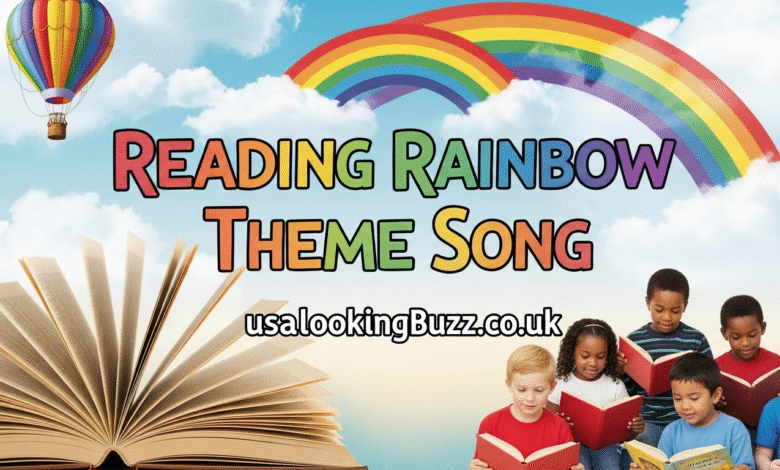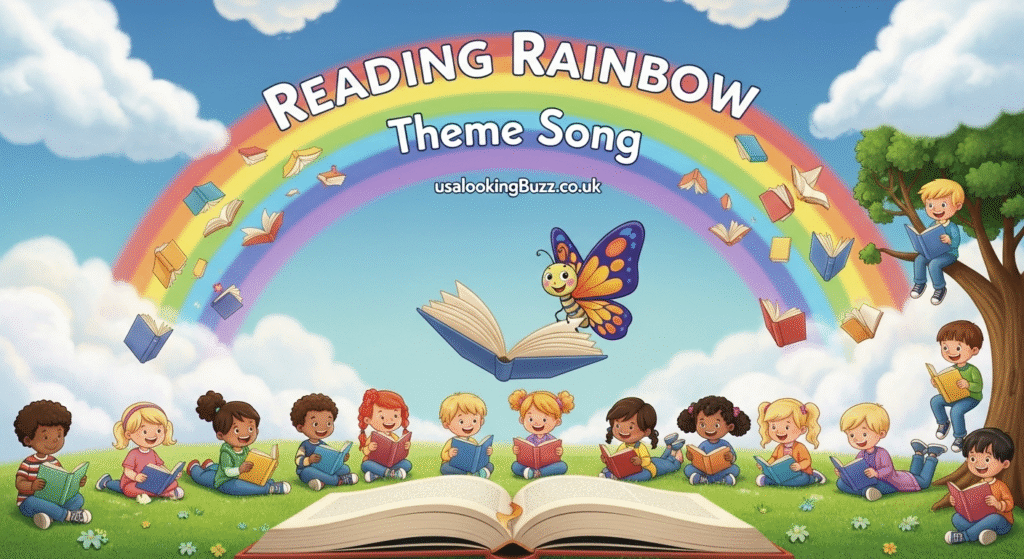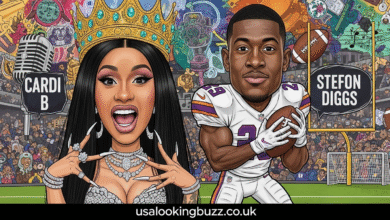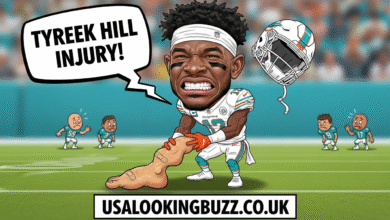Exploring the Magic of the Reading Rainbow Theme Song

Introduction to Reading Rainbow
The television series Reading Rainbow, which first aired in 1983, has played a pivotal role in fostering a love for reading among children. Created by LeVar Burton, this educational program aimed to empower children to explore literature, nurturing their imaginations and enhancing literacy skills. Targeting children aged three to eight, Reading Rainbow often featured engaging stories that resonated with its young audience, making reading more accessible and enjoyable.
The format of the show combined storytelling with an emphasis on the importance of books, which was further highlighted through the iconic Reading Rainbow theme song. This catchy tune became synonymous with the series and effectively encouraged young viewers to dive into books and discover new worlds. The show also incorporated segments where children would take part in book reviews and recommendations, giving them a voice in their literary choices.
Over the years, Reading Rainbow has garnered critical acclaim and accolades, including multiple Daytime Emmy Awards, owing to its innovative approach to children’s programming. Although the series concluded its initial run in 2006, it has maintained its popularity through various platforms, ensuring that new generations can experience its magic. The influence of Reading Rainbow on children’s literacy remains significant, as the series not only inspired a cultural phenomenon but also promoted core values of curiosity and exploration. In a world increasingly dominated by technology, the messages embedded in the Reading Rainbow theme song continue to resonate, reinforcing the value of reading as a gateway to knowledge and imagination.
The Importance of Theme Songs in Children’s Shows
Theme songs play a pivotal role in children’s programming, acting as the auditory signature that distinguishes each show. Notably, a catchy and memorable tune, such as the Reading Rainbow theme song, serves to engage young audiences from the outset. These musical pieces are crafted to resonate with children, often using repetitive melodies and simple lyrics that are easy to remember. This accessibility is crucial; it facilitates not only enjoyment but also learning and retention. When children hear the familiar strains of a theme song, it sparks recognition and excitement, setting the stage for what they are about to experience.
Moreover, theme songs play an essential role in creating an emotional connection to a program. They establish the tone, offering a sense of comfort and anticipation that can enhance the viewing experience. The Reading Rainbow theme song, for example, elicits feelings of adventure and possibility, perfectly aligning with the show’s focus on exploration and discovery through books. This emotional resonance is key to making learning memorable, as children are more likely to engage with content that they find enjoyable and relatable.
In addition to emotional engagement, theme songs can serve as effective educational tools. They often incorporate key themes and messages that align with the show’s content, reinforcing learning objectives in a fun and entertaining way. The right tune sticks in the mind, and children may find themselves recalling lessons in literacy and storytelling when they hear the familiar melody. Thus, a well-composed theme song is not just an auditory adornment; it is an integral component of the educational fabric of children’s shows. It enhances the overall experience and aids in fostering a love for learning that can last a lifetime.
A Deep Dive into the Reading Rainbow Theme Song
The Reading Rainbow theme song serves as a captivating gateway that invites children into the enchanting world of literature. Through its melodic structure and evocative lyrics, the song emphasizes themes of imagination, discovery, and adventure, making it a powerful tool in promoting literacy among young audiences. As the soothing notes play, children are encouraged to visualize the boundless possibilities that reading offers. The careful combination of these elements creates a strong emotional connection that resonates deeply with listeners.
At the heart of the theme song lies a message of discovery. The lyrics invite children to explore far-off places and embark on incredible adventures, emphasizing that books can transport them to new worlds. This concept not only fosters a sense of curiosity but also encourages young readers to view literature as a portal to experiences that engage their minds and imaginations. The song’s repetitive and rhythmic phrases enhance its memorability, making it easy for children to sing along while simultaneously promoting familiarity with the joys of reading.
Furthermore, the theme song encapsulates a spirit of adventure. The lyrics depict vivid imagery, portraying reading as a journey filled with wonders and surprises. Through this portrayal, young listeners are motivated to seek out new stories, characters, and ideas, igniting a passion for reading that can last a lifetime. This sense of adventure fosters a belief in the transformative power of literature, demonstrating to children that each book is an opportunity for growth and exploration.
In essence, the Reading Rainbow theme song not only entertains but also enriches young minds by instilling a love for reading. Through its compelling themes and musicality, it continues to inspire generations, foregrounding the belief that every child can embark on their own reading journey.
The Legacy of the Reading Rainbow Theme Song
The Reading Rainbow theme song, composed by the talented musician and songwriter, Lamont Dozier, has transcended its original context as the opening number of a beloved children’s television show. Since its debut in 1983, the theme song has grown into a cultural emblem that embodies the joy of reading and the thrill of exploring new worlds through literature. Its melodic charm and uplifting lyrics resonated with young audiences, engaging their imaginations and inspiring a lifelong love for books.
Generations of viewers have been touched by the song’s simple yet powerful message, encouraging children to become curious learners and avid readers. The catchy refrain, “Butterfly in the sky, I can go twice as high,” evokes a sense of adventure and possibility, portraying reading as a gateway to endless opportunities. This sentiment has made the Reading Rainbow theme song an enduring part of the collective cultural memory, often referenced in discussions about educational television and children’s programming.
Moreover, its impact extends beyond the confines of the show itself. The theme song has been featured in various media, including parodies, memes, and social media trends, demonstrating its relevance even in contemporary culture. Notably, well-known figures and institutions have embraced the song’s message by using it to advocate for literacy and education initiatives. The song continues to serve as a rallying cry for educators and parents, reinforcing the importance of fostering a love for reading from an early age.
In essence, the legacy of the Reading Rainbow theme song is one of inspiration and perseverance. As it remains an influential piece of music, it serves as a reminder of the power of stories and the vital role they play in personal development and growth. The song stands as a testament to the lasting impact of children’s media and the profound connections it can forge in the hearts of young audiences.

Cultural References and Appearances
The Reading Rainbow theme song has transcended its origins as a children’s television series tune to become a significant cultural artifact. Its catchy melody and informative lyrics have inspired numerous references across various media platforms. One notable instance occurred in popular social media channels, where users have created parodies of the theme song, often intertwining it with contemporary themes and humor. These adaptations not only bring nostalgia to adults who grew up with the show, but also introduce new audiences to the essence of the original series.
Moreover, the influence of the Reading Rainbow theme song can be observed in modern remix culture. Musicians and producers have sampled or remixed the song, infusing it with contemporary beats while preserving its core melody. These remixes often serve to highlight the importance of literacy and education in innovative ways, demonstrating the song’s ongoing relevance in today’s society. Some popular online platforms even celebrate these remixes, providing artists an avenue to feature their work and further broadening the song’s reach.
In addition to social media and remixes, the Reading Rainbow theme song has made appearances in various television shows and movies as a nostalgic nod or tribute. These moments not only resonate with audiences but also exemplify the song’s evolution into a symbol of literacy advocacy. The recurring use of the song across diverse backgrounds emphasizes its significance beyond mere entertainment, encapsulating a collective memory tied to learning and exploration.
Through these cultural references and appearances, the Reading Rainbow theme song continues to thrive and evoke excitement about reading and education in a rapidly changing world. Its impact underscores the timeless message of the song and its capacity to inspire future generations.
Educational Takeaways from the Reading Rainbow Theme Song
The Reading Rainbow theme song serves as more than just an introductory melody to a beloved children’s program; it is imbued with educational themes that promote literacy and creativity among young viewers. The repetitive, inviting lyrics and enchanting tune emphasize the joy of reading and the adventures that can unfold through books. By using simple yet impactful language, the theme song encourages children to develop a positive attitude towards literature from an early age.
One of the paramount educational aspects of the Reading Rainbow theme song is its focus on storytelling. It encourages imagination, suggesting that books can transport readers to different worlds and scenarios. This notion not only stimulates children’s creativity but also fosters a sense of wonder and curiosity about the world around them. By inviting listeners to “take a look” and “read,” the song instills a proactive approach to engaging with stories, cultivating a lifelong love for reading.
Furthermore, the emotional connection to stories emphasized in the Reading Rainbow theme song plays a vital role in a child’s development. It teaches children to relate to characters and situations, enhancing their empathy and understanding of diverse human experiences. Educators and parents can leverage this emotional engagement to discuss important life lessons and values, subtly reinforcing moral teachings through the narratives found in books.
Incorporating the themes presented in the song into everyday learning can also benefit parents and educators. Strategies such as interactive reading sessions, storytime discussions, and creative storytelling can transform the reading experience into an enriching activity. Not only do these actions solidify literacy skills, but they also allow children to explore their creativity and emotional depth, paving the way for a well-rounded educational journey.
Famous Covers and Interpretations
The enduring popularity of the Reading Rainbow theme song has inspired a plethora of artists to create their own interpretations, spanning various genres and mediums. This beloved melody, originally composed by Stephen Foster and performed by LeVar Burton, has transcended its roots, becoming a cultural touchstone that resonates with audiences of all ages. Its inviting lyrics and uplifting message about the joy of reading have opened doors for numerous artistic renditions.
One prominent cover that stands out is by the acclaimed musician and educator, Dr. Carla B. Hodge. Her rendition incorporates elements of jazz, infusing the original tune with vibrant brass instrumentation and a rhythmic swing. This fusion not only showcases the adaptability of the Reading Rainbow theme song but also introduces it to a new generation, all while maintaining its core message about the importance of literature and imagination.
Another remarkable version comes from the indie-pop duo, ‘The Bookworms.’ Their airy take on the theme transforms it into an ethereal ballad, complete with harmonies and soft guitar strumming. This interpretation emphasizes the nostalgia associated with the original song, evoking memories of childhood and the magic of storytelling. Such adaptations illustrate how the Reading Rainbow theme song continues to resonate emotionally, regardless of the musical styling.
Furthermore, various educational institutions have embraced the theme song, creating unique versions for school performances or graduation ceremonies. These interpretations often feature students singing alongside diverse instrumental accompanyments, reinforcing the message that reading enriches lives and fosters community. Through these various covers, the versatility of the Reading Rainbow theme song is highlighted, showcasing its ability to bridge generational gaps and inspire a love for reading across diverse audiences.
Personal Stories and Testimonials
The emotional resonance of the Reading Rainbow theme song is often woven into the fabric of the lives of those who grew up with the show. Many fans have shared touching anecdotes about the role this beloved theme played in their formative years. For instance, one individual recalls sitting beside their parents during the show’s airing, captivated not only by the colorful visuals but also by the enchanting melody. That song became a comforting soundtrack, serving as a gateway that would lead them into a world filled with books and imagination.
Another fan describes how the Reading Rainbow theme song sparked a lifelong passion for literature. As a child, they were not particularly inclined towards reading; however, the warmth and joy emitted from the show’s theme changed that perception entirely. They remember vividly the moment when the melody conjured the desire to pick up a book, leading them to countless adventures through pages filled with words. In many respects, this love for reading became ingrained in their identity, with the melody serving as a constant motivator throughout their educational journey.
Testimonials also highlight how the song acted as a cultural touchstone, enhancing not only personal growth but also social connections. Several individuals recall sharing the theme with friends and family members, creating an immediate bond over their mutual appreciation for the program and its values. These shared experiences often translate into deeper discussions about favorite stories or characters featured in the series, fostering a community centered around literature and creativity.
In reflecting upon these heartfelt testimonies, it is evident that the Reading Rainbow theme song is more than just a catchy jingle; it is a lasting emblem of inspiration and a catalyst to nurture a profound love for reading in multiple generations.
Conclusion: The Enduring Power of the Reading Rainbow Theme Song
The Reading Rainbow theme song has remained a beloved staple in the realm of children’s literature and television since its debut. Its melodic and inviting nature is expertly crafted to capture the imagination of young audiences, promoting the idea that reading can be a joyous adventure. The song embodies the essence of the show, which encourages children to explore the world of books while fostering a love for literacy. Through its repetitive and catchy lyrics, the theme song effectively reinforces the message that books are gateways to new experiences.
The influence of the Reading Rainbow theme extends beyond its immediate auditory appeal; it resonates with the values of curiosity and discovery. Each verse invites listeners to envision the endless possibilities found within the pages of a book, offering a perfect blend of entertainment and education. This connection has left a lasting impact on generations, reinforcing the importance of reading as a fundamental skill and a source of joy.
As we reflect on the significance of the song, it becomes clear that its power lies not just in its nostalgia but also in its ability to inspire future generations. The engagement it fosters with literature is vital in promoting literacy, imagination, and creativity among children. With the emergence of new forms of media, celebrating and advocating for literacy remains crucial. Strong literacy skills can significantly impact a child’s academic success and personal growth.
In essence, the Reading Rainbow theme song continues to serve as a treasured reminder of the magic that reading can bring into a child’s life. Its legacy calls us to celebrate both the arts and education, ensuring that children are equipped with the tools needed for lifelong learning and exploration through reading.




